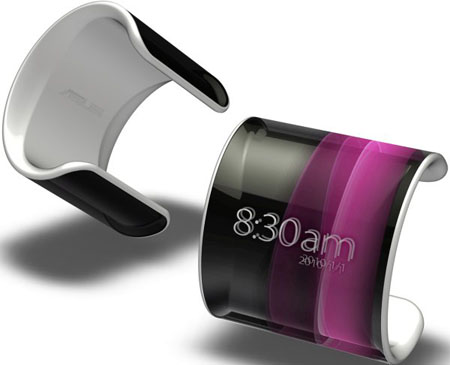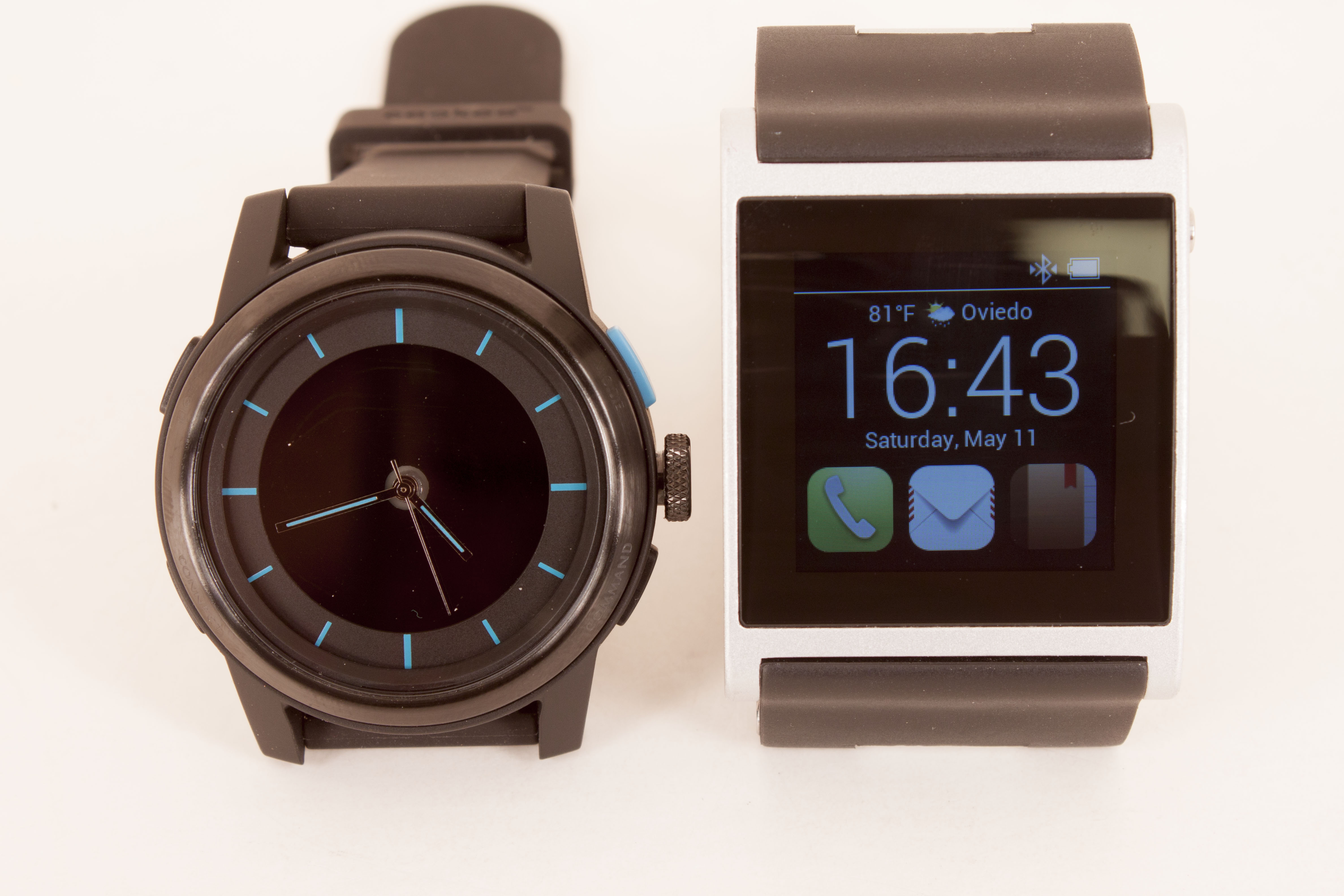You can see these steps if you look back at the evolution of the desktop, the laptop, smartphone, and of course the tablet. Each one of these devices has had an interim step where they were reliant on connectivity to an older computing device. These steps are important for two reasons the first is to give the market the time to accept the idea of the new form factor and the other is to give the technology the time to develop. Right now wearable computing is in the first stage where we will see these devices on the market, but as more of a companion device than a standalone product.
If you look for them you can find multiple device that qualify as wearable computing products, but right now they all appear to be headed in different directions. For the most part they are only able to talk to the rest of the world via Bluetooth and even then they are limited in the amount of information that you can access and input. As an example take a look at the most sophisticated of the available smartwatches today, the I’m Watch.
Here we have an ARM based touch screen device that is running a customized version of Android called Droid 2. It can make phone calls, receive mail, Facebook and Twitter updates and much more. What it cannot do is send email, update Facebook or Twitter and it has a vastly limited capability to send messages of any kind. Despite being a smartwatch it is not much more than a companion product that can update you from time to time about what is happening around it. We will cover the ins and outs of the I’m Watch in our full review later on, but for now let’s just say that even though it is the top of the food chain it cannot stand on its own.
Next we have the Cookoo which is a different direction than what the I’m Watch, but does a great job at what it is designed to be; a companion device. We have not spent as much time with the Cookoo as we have with the I’m Watch and it has a much more limited scope still it represents another facet of this emerging market. We will also have a review of the Cookoo shortly as well.
It’s all about the alerts -
So what do both of these devices have in common? Well they both do not do much more than notify you to look at or read your phone. In the case of the Cookoo it is simply a notification icon on the analog display while the I’m Watch is a little more detailed and you can get some of the information right on the watch. True both have additional features that make them each stand out (and that we will cover in our reviews), but at this point in their evolution they are just an extension of your mobile phone and tethered to them by Bluetooth. Even Google glass is not much more than a way to provide you with easy to read information at this stage.
Why people want more data at their fingertips -
A while ago I was at lunch with a group of people. We all had smartphones which kept going off during the lunch and we all kept checking on them as, like most professionals, we all needed to be available for any emergencies. What was interesting is that any time one phone went off we all check our phones despite them being from different manufacturers and having different sounds. It was almost comical to watch four people simultaneously reach for their phones whenever there was the sound of an alert. This is why devices like I’m Watch, Cookoo and others are going to become popular in the market, they are an extension of the information overload we are all under. Of course both products need work and approach this goal from different angles, but they do a fair job of filling this need in the same way that PDAs filled the need for more portable methods of carrying personal data when they hit the market.
Where do we go next?
The problem with today’s wearable computing devices is that they are all companion devices of one type or another and limited ones at that. They are good at getting more information from your phone to your fingertips (or eyes), but not so good at creating that data and getting it back. When you need to respond to messages or anything else you still have to pull out your phone of hit the computer to take care of it (again just like the PDA). In order to take the concept of wearable computing to the next stage manufacturers must find a reliable way to get input to the device. Even if they remain tethered to our phones via Bluetooth they need to be able to respond. In most cases your screen real-estate is too small for a reliable touch based keyboard so that means something else is needed.
One technology that is under consideration is the projected keyboard. With this technology you would have a small version of a keyboard projected onto a flat surface that could register your key presses and translate them to whatever device you are using. We have seen several prototypes of these and they work fairly well.
Once you have input down there are a few other items that you need to move the new market along. Here things become more complex as we start moving into new technology some of which does not exist just yet (unlike the input methods we mentioned above). Smartwatches and other wearable devices need better displays. Having a 1.5 x 1.75 inch display is not going to cut it for most people. There is only so much that a display that size can do requiring you to keep scrolling down to read even short messages. This means that something needs to be developed to allow for more screen real estate.
A few years ago (At CES 2011) Asus showed off a design that was pretty impressive concept that made use of an expandable display. This display could be pulled out from the device (which was worn like a watch) to and adjusted to fill the available screen. Since that time there have been innovations that are bringing this concept closer to reality. We already have semi-flexible touch enabled displays, but nothing that would bring the concept we saw to life. For this you would need something that could be both flexible and rigid when needed. Perhaps a very thin film that was supported by telescoping arms which could retract into the device when not in use. The trick here would be to make sure that only the part of the screen that was visible is used for touch and to display information.
With a decent display and input comes the need for quality audio. Here we are a little better off as there are many technologies that can meet this need available on the market right now. Unfortunately all of them need to be worked on to ensure they are more power efficient.
Beauty is only skin deep -
Now that we can touch, see, and hear our new wearable computing products we need to make sure they can do the tasks we want and also run for an acceptable length of time before needing to be tied back to a power outlet.
This means a new SoC to power our device along with better power management and don’t forget a battery that is not only small, but powerful. We are pretty sure that Intel, Samsung, AMD, Apple, nVidia, and others are already working to find a solution to the SoC problem and that others are looking to meet the power needs including the possibility that we might see solar power cells in the primary display. These are the pieces that really must be built before we will see wearable computing make any real moves forward. Building displays and new input devices is not enough to make these work you have to have the internal computing power to push it all. On top of that we need wireless and cellular radios that are not only small, but once again low power AND can still maintain good signal strength.
Interestingly we are at a point where the display, input and audio technologies are ahead of the current processors and GPUs that will fit into these products. This means that we might not see any real advances until one of the big players comes up with the brain small enough to fit into one of these new devices. Until then we will get to see more devices like the I’m Watch with the possibility that Samsung or Apple might drop in Wireless simply because they can. We just wonder if a product from one of the big guys will help this emerging market or hurt it at this point.
Next we will dive into the I’m Watch. We will look at this touch enabled “smartwatch” and see where it stands in the evolution of wearable computing.
Tell us what you think in our Forum




